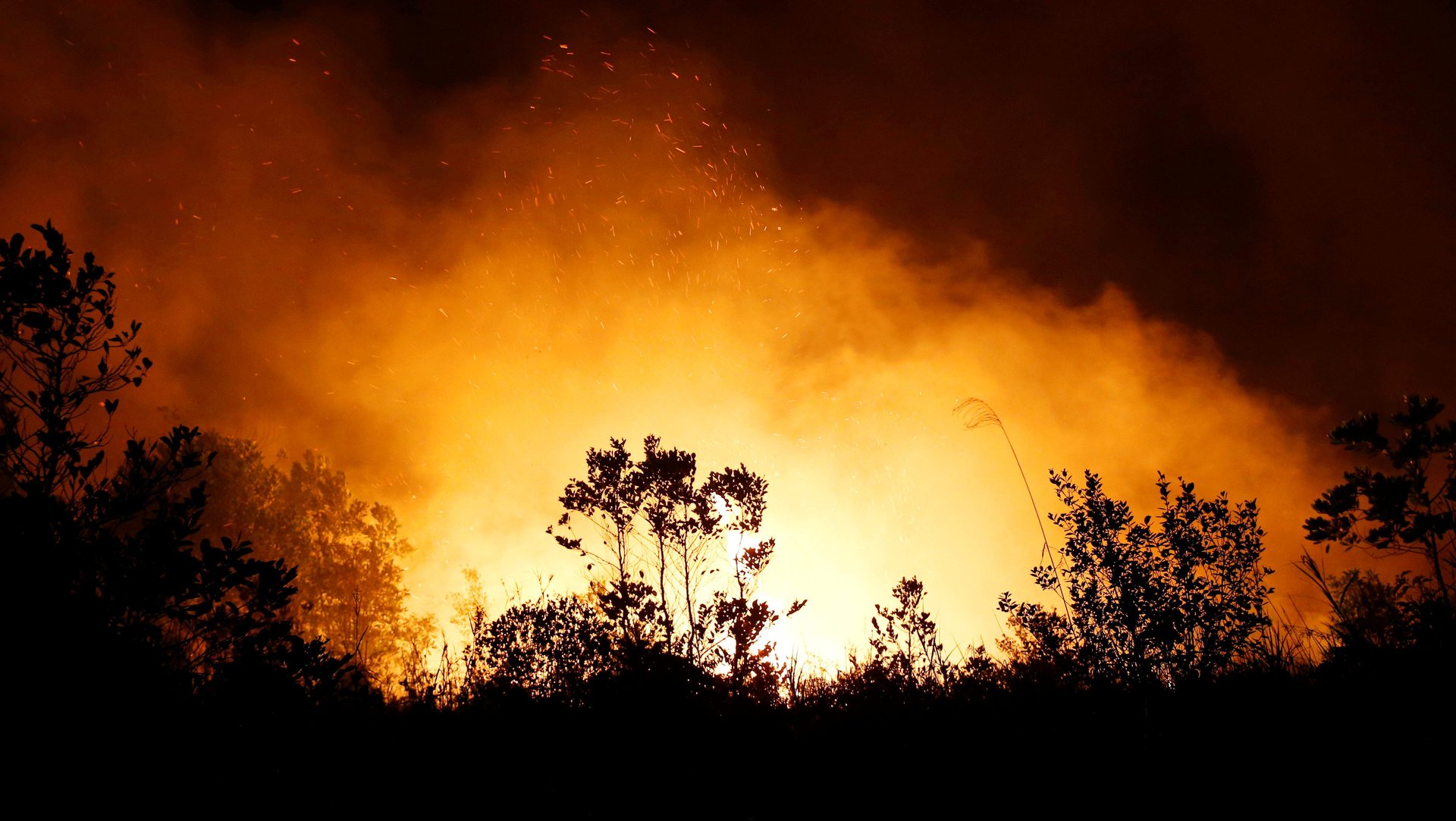A controversial climate plan to restore a safe atmosphere debuts at the UN
Nowhere in the Paris Agreement do the words “climate restoration” appear. “Mitigation” shows up 23 times in the landmark 2016 accord to slow global warming. The idea of rehabilitating the atmosphere to its pre-industrial state isn’t even mentioned. Publicly, the signatories’ stance is to avert the worst of climate change while adapting to the destructive warming now locked into the climate system.


Nowhere in the Paris Agreement do the words “climate restoration” appear. “Mitigation” shows up 23 times in the landmark 2016 accord to slow global warming. The idea of rehabilitating the atmosphere to its pre-industrial state isn’t even mentioned. Publicly, the signatories’ stance is to avert the worst of climate change while adapting to the destructive warming now locked into the climate system.
But the goal of restoring the climate—returning to its condition before humans pumped a trillion or so tons of greenhouse gases into the atmosphere—had its first hearing at the United Nations’ New York headquarters on Sept. 17. This Tuesday’s event, organized by the Foundation for Climate Restoration and attended by dignitaries ranging from Vatican emissaries to UN environmental agency representatives, proposed something very different: restoring atmospheric carbon levels from today’s 415 parts per million (PPM) to below 300 PPM by 2050, a level not reached for at least 3 million years.
That framing has yet to win over the scientific community or policymakers, or receive the UN’s official imprimatur. Despite being hosted at the international body’s headquarters on New York’s East River, it was presented as a potential partnership, part of the UN’s efforts to secure private-public support to reach its sustainability goals.
But it was a high-profile start for organizers who hope to make restoration the new lens to focus climate action.
What that means in practice is uncertain. At a minimum, restoration requires sucking gigatons of carbon dioxide and other greenhouse gases out of the air: The Foundation for Climate Restoration has proposed (pdf) pulling 50 gigatons (GT) of CO₂ from the air every year for at least 20 years. That’s more than today’s annual emissions of about 40 GT. Early estimates put the goal at a cost of $3 trillion per year (or about twice today’s $25 price per ton on carbon in the European Union).
Restoration is the right target, says Rob Jackson, an earth system science professor at Stanford University who leads the Global Carbon Project. “For me, it’s a different way of motivating change,” he said by phone. “To discuss temperature stabilization with the public is somewhat abstract and arbitrary. To talk about restoring the atmosphere is more intuitive.”
But Jackson tempered expectations. Even a modest goal of 10 GT per year would present daunting financial, technical, and political hurdles. “I don’t want to say it’s not realistic,” he said, “but that’s like running the entire coal industry in reverse and expending a lot of energy to get lots of CO₂ out of the atmosphere.”
A number of proactive measures are on the table (see the Quartz obsession on the Race to Zero Emissions). Concrete that sequesters carbon in a stone. Power plants that pull carbon dioxide from flue gas. Bioreactors recruiting algae to grow carbon-neutral fuels. Leslie Field, an MIT and University California, Berkeley-trained engineer at the event, founded a company that spreads very fine silica dust on ice to reflect sunlight off its surface—preventing loss beyond the 95% of Arctic sea ice that has melted since 1985. Over time, more reflective ice cover can resist melting and recover some of its lost area.
Opponents suggest restoration presents a massive unknown risk to the planet. Geoengineering a system as complex as the climate could have unintended consequences. And planetary tinkering, some worry, could be taken as a license to emit more while diverting resources from prevention.
But the world is running out of options. To stay under the threshold the world’s scientists have set for “catastrophic” global warming, about 2°C, the UN’s Intergovernmental Panel on Climate Change (IPCC) says even the measures agreed upon in the Paris agreement are not enough. There’s no path to a safer 1.5°C temperature rise without it. Even the 2°C goal is slipping away.
So scientists are edging into territory once considered fringe. Today, “atmospheric restoration” appears in more than 50 scientific publications, many added since 2015. Several studies (paywall) are examining the technical and economic feasibility of pulling manmade emissions out of the air. In May, Stanford’s Jackson and other scientists proposed (paywall) removing more than half of global atmospheric methane to neutralize one of the most potent global warming gases.
The conversation is shifting among politicians, lawyers, and investors as well. Court cases and legal theorizing (pdf) have proposed establishing a US constitutional right to a stable climate. Governments such as California’s are promoting carbon “negative” policies rather than merely carbon neutral. Tom Baruch, a venture capitalist who attended Tuesday’s event, endorsed overhauling global energy systems, which would take a $1.5 trillion to $10 trillion investment over the next few decades.
Climate restoration is premised on international cooperation. If the Paris Agreement is any indication, it’s beyond what is politically possible today. The Paris accords were designed to break the logjam in climate negotiations by enabling every country to set their own voluntary targets. So far, almost no one has met them, and the US has indicated its intent to withdraw from the pact. As nationalism surges around the world, business and researchers can lay the groundwork for climate restoration. But every major country will have to contribute to do it.
This story is part of Covering Climate Now, a global collaboration of more than 250 news outlets to strengthen coverage of the climate story.